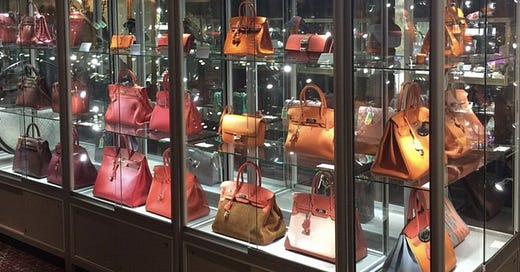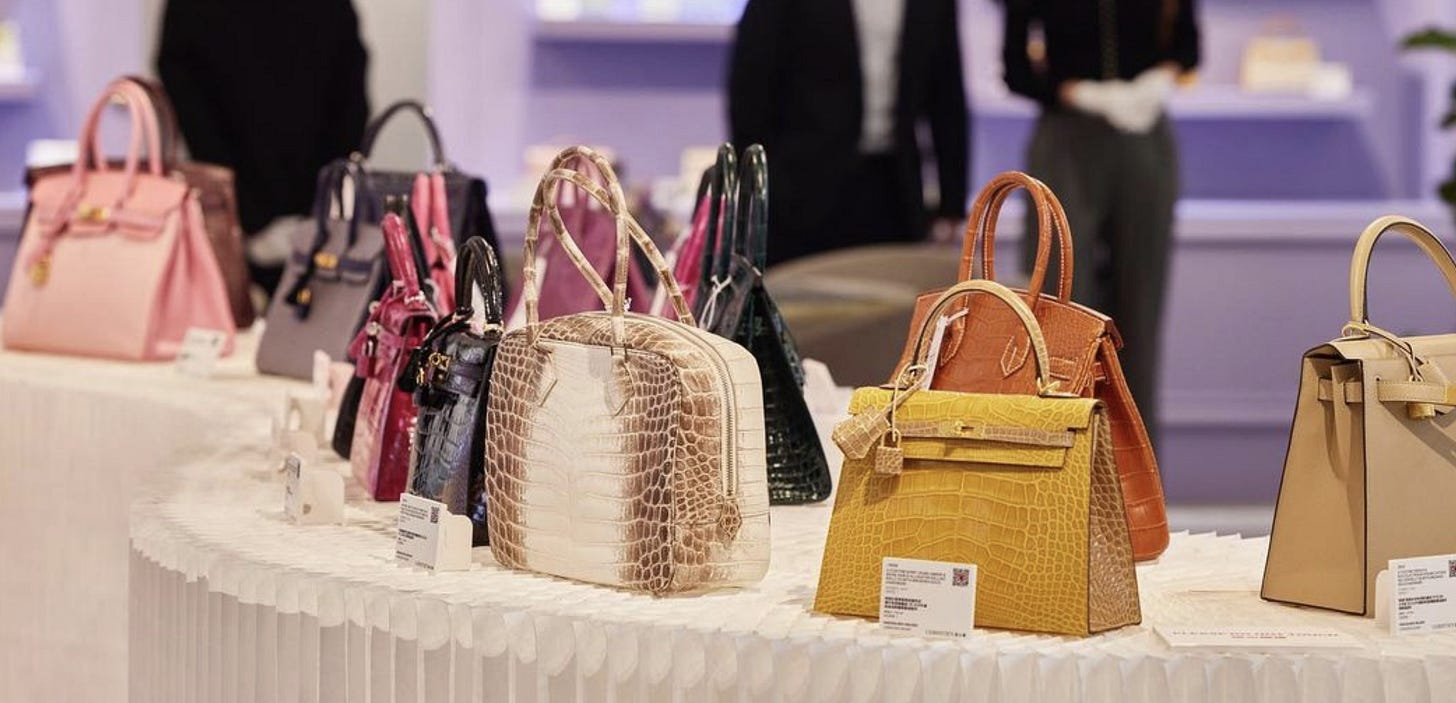In the realm of luxury fashion, few brands possess the mystique and exclusivity of Hermes. Known for its impeccable craftsmanship, timeless designs, and limited availability, Hermes bags have become more than just fashion accessories; they are status symbols that command attention and admiration. For those seeking to acquire or part with these coveted treasures, the auction house has emerged as a hub of activity, where enthusiasts and collectors converge to engage in the intricate dance of buying and selling Hermes bags. This article delves into the allure of these bags, the auction process, and the factors that influence their prices on the auction block.
The Allure of Hermes Bags
The allure of Hermes bags lies in their meticulous craftsmanship, iconic unchanging designs, and undeniable exclusivity. Each Hermes bag is meticulously handcrafted by one skilled artisan from start to finish, often taking days to complete. The brand's dedication to maintaining the highest standards of quality and attention to detail sets its creations apart from the alternatives.
The most iconic Hermes bag is the Birkin, named after actress and singer Jane Birkin. The Birkin's distinctive design, featuring two handles and an instantly recognizable closure, has made it a symbol of luxury and elegance. Another coveted design is the Kelly bag, named after Grace Kelly, Princess of Monaco. With its refined trapezoidal shape and singular top-handle, the Kelly bag exudes sophistication and grace.
The scarcity of Hermes bags is a significant contributor to their allure. Though the brand is ever increasing production, their strict quality standards restrict them from ever meeting demand, which swells continually. This scarcity, combined with high demand from celebrities, collectors and other members of the one percent, creates an environment where owning a Hermes bag becomes a symbol of prestige and social status.
The Role of Auction Houses
Auction houses have become central to the world of Hermes collectors, serving as platforms for buying and selling rare and valuable bags, though the rarest bags still more often change hands privately through dealers. The auction houses provide a structured and transparent process for both buyers and sellers, offering a space where rarity and craftsmanship are appreciated and valued.
Prominent auction houses like Christie's, Sotheby's, Artcurial and Heritage frequently feature Hermes bags in dedicated auctions. These events attract a diverse audience, including seasoned collectors, first-time buyers, and individuals looking to invest in the growing luxury goods market. Auctions not only offer a chance to acquire unique pieces but also provide sellers with an opportunity to reach a global audience of potential buyers. The fact that an auction ends on a set date when everything (or nearly so) will sell, is attractive to sellers who want to be sure their bag gets sold, rather than listing it with a dealer and not knowing when the right buyer will come along.
The Auction Process
The auction process for Hermes bags is a carefully orchestrated affair that involves several key stages:
Authentication and Valuation: Before a Hermes bag is accepted for auction, auction houses meticulously authenticate it to ensure its genuineness. Specialists assess factors such as the bag's condition, materials, and age to determine its value.
Cataloging and Pre-Sale Marketing: Once accepted, the Hermes bag is cataloged with detailed descriptions and high-quality images. These catalog entries are then marketed to potential buyers through online and offline channels, generating interest and anticipation before the auction.
Bidding: During the auction, registered participants can place bids on the bags they are interested in. Bidding can occur in person, over the phone, or online, depending on the auction house's setup. It is increasingly uncommon to find live auctions of Hermes bags, with Christie’s Hong Kong, and Artcurial’s Monaco auctions being some of the only remaining regular live events. The rest have adopted online-only models, though typically with an in-person preview where prospective buyers can see the bags before bidding.
Competitive Atmosphere: The auction environment is dynamic and competitive. Bidders vie for their desired items, often driving prices higher through a series of incremental bids. Experienced bidders may know how to take advantage of bidding increments to make sure their top number doesn’t fall to their competitors paddle. Many bidders wait until the last minute, or the last seconds of an auction to bid, for fear that bidding an item up early will attract attention and allow competitors the time to decide to spend more.
Final Bid and Winning: The highest bid when the auctioneer's hammer falls, or when the online timer hits zero, secures the winning bidder's position. The winning bidder then becomes the owner of the bag, provided they meet the auction house's payment and collection terms.
Factors Influencing Prices
Several factors influence the prices Hermes bags command at auction:
Condition: The bag's condition significantly affects its value. Bags in pristine condition, free from wear and tear, stains, or damage, are more desirable and tend to fetch higher prices. Bags produced within the last year that are “store-fresh” compared with slightly older bags kept in unused condition will still fetch a premium, as some buyers will always prefer the newest bags. But vintage pieces that have been kept unused for decades can supersede “store-fresh” pieces because of their sheer rarity.
Rare Materials: Hermes bags are produced in a variety of materials, with exotic skins such as crocodile and Alligator being particularly valuable. Bags made from these rare materials often command premium prices due to their exclusivity. One the other side of the spectrum, though, the most common leathers, such as Togo and Epsom, are also among the highest valued materials. Discontinued leathers, though rare, appeal to a smaller niche of buyers and therefore tend not to sell as high as leathers with a more mass-appeal.
Limited Editions and Vintage Pieces: Limited Edition Hermes bags and vintage designs from earlier decades are highly coveted due to their scarcity and significance. These pieces often carry a premium due to their rare or unique nature. Limited Editions often sell highest when they first appear at auction, with prices declining for about three to five years before rebounding as pristine examples become scarce. Some Limited Editions, though, never become regulars on the market and when they do appear, regularly command top-dollar.
Provenance: The bag's history and previous ownership can sometimes influence its value. Bags owned by celebrities or those with notable provenance may attract greater interest from collectors, but as a rule of thumb, this primarily applies to Jane Birkin’s Birkins and Grace Kelly’s Kellys.
Current Market Trends: Fashion trends and shifts in consumer preferences can impact the desirability and value of certain Hermes bag styles, sizes or colors. Bags that align with current trends tend to attract more attention and higher bids. Around 2015 fashion trends shifted towards smaller bags, and the auction prices for Hermes bags followed suit. Now as trends are swinging back towards larger bags, the Hermes auction market appears to be angling itself that way as well.
Tips for Buyers and Sellers
For those looking to navigate the world of buying and selling Hermes bags at auction, here are some essential tips:
Buyers:
Research: Thoroughly research the specific bag you're interested in, including its history, materials, and typical auction prices.
Set a Budget: Determine your budget before entering the auction. Bidding wars can escalate quickly, and it's important to know your limits. Bidding at auction is a rush, few experiences match the anticipation held in the final seconds of an auction you’re about to win.
Ask Questions: If participating in an online auction, ask the auction house for additional images, condition reports, and any other relevant information to make an informed decision. If there is an in-person exhibition that you can attend, go and see the bags you’re interested in before bidding.
Sellers:
Authenticity: Ensure your Hermes bag is authentic and in the best possible condition before submitting it to an auction house.
Choose the Right Auction House: Select an auction house with a strong reputation for handbag auctions and a track record of successfully selling Hermes bags.
Set a Realistic Reserve Price: Work with the auction house to set a reserve price that reflects the bag's value. Setting a reasonable reserve can attract more potential bidders. Setting a high reserve can result in your bag not selling. This often means either paying the auction house a fee to get it back, which covers their photography and cataloging costs, or moving it to the next auction with a much lower reserve.
Time Frame: Though it is appealing that your bag will be sold on a set date, consignments are typically closed for an auction about a month beforehand, and sellers are typically paid out 45 days after the sale has closed. This means the shortest turn-around time between consignment and payment for sellers is usually about 75 days.
The world of buying and selling Hermes bags at auction is a dynamic realm where luxury, rarity, and craftsmanship intersect. Auction houses provide a platform for collectors, enthusiasts, and investors to engage in a process that celebrates these iconic fashion treasures. As Hermes bags continue to capture the imagination of the ultra-wealthy and those seeking unique investments, the allure of owning a piece of this luxury legacy remains as strong as ever.









